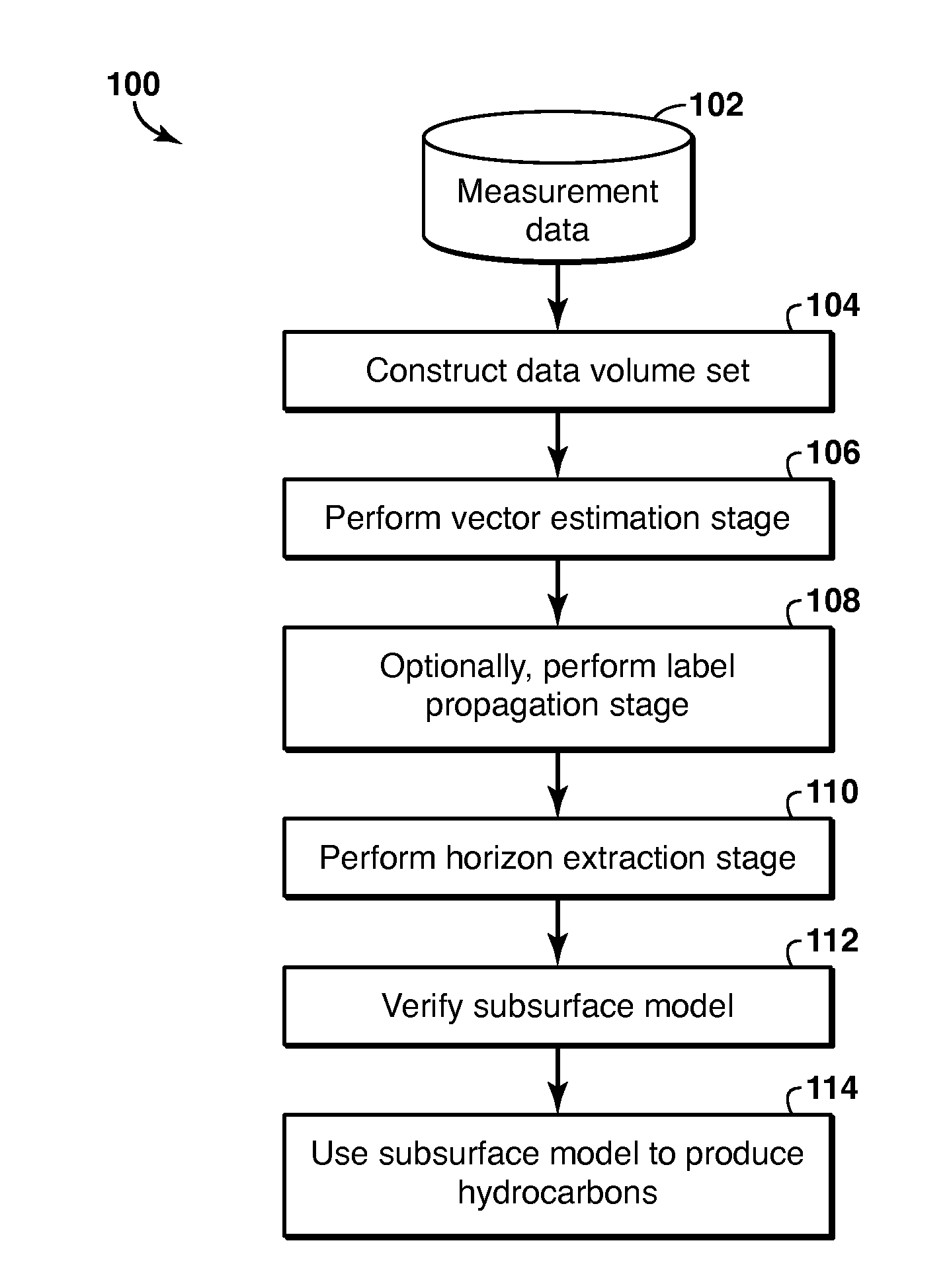Method and System for Geophysical Modeling of Subsurface Volumes Based on Label Propagation
a geophysical modeling and label propagation technology, applied in the field of prospecting, can solve the problems of large data amount, computational cost, and inability to adjust local dips,
- Summary
- Abstract
- Description
- Claims
- Application Information
AI Technical Summary
Benefits of technology
Problems solved by technology
Method used
Image
Examples
first embodiment
[0041]As a first embodiment, a method of computing a tangent to the closest ridge curve within a fixed neighborhood around each spatial location P is provided for two dimensions (2-D). Given a spatial location P, which is represented as (Px, Pr), the method involves extracting a neighborhood (denoted N) around it by equation (e1) and recording the amplitude (or attribute) values there denoted by W(Q).
[0042]The neighborhood N may be calculated by equation (e1):
N={(Q:|Qx−Px|y−Py| (e1),
where subscripts x and y refer to the spatial location along the x-axis and y-axis respectively, and the neighboring location or point Q has spatial coordinates Qx and Qy. , and n is the radius of the neighborhood N. The neighborhood may include a neighborhood size and shape.
[0043]In this calculation, the data values, which may be as many as (2n+1)2, may be expressed as weights to approximate the y-values, which represent time or depth in a seismic line (e.g., composed of one or more seismic traces), as...
second embodiment
[0047]Alternatively, in a second embodiment, a method may involve using the iso-curves and iso-surfaces in an iso-surface method. In this method, local measurements are obtained in a tensor field that includes iso-surface tensor Tp at each location P in the data volume set. Each iso-surface tensor Tp is computed in a similar process. First, a similarity vector is computed using equation (e7):
v→PQ=σ(P,Q)(Q-P)Q-P;(e7)
where the similarity vector is {right arrow over (ν)}pQ. The similarity vector {right arrow over (ν)}pQ may be computed for each of its neighbor points Q in a predefined neighborhood (e.g., the neighbor point Q within a fixed distance of spatial location P). The magnitude of the vector is the similarity σ(P, Q) of the data values at the spatial location P and at neighbor point Q, which may be expressed in equation (e8):
σ(P,Q)=exp(−(data(P)−data(Q))) (e8)
and the direction is the unit vector that joins spatial location P to point Q (here data(P) and data(Q) are the data va...
PUM
 Login to View More
Login to View More Abstract
Description
Claims
Application Information
 Login to View More
Login to View More - R&D
- Intellectual Property
- Life Sciences
- Materials
- Tech Scout
- Unparalleled Data Quality
- Higher Quality Content
- 60% Fewer Hallucinations
Browse by: Latest US Patents, China's latest patents, Technical Efficacy Thesaurus, Application Domain, Technology Topic, Popular Technical Reports.
© 2025 PatSnap. All rights reserved.Legal|Privacy policy|Modern Slavery Act Transparency Statement|Sitemap|About US| Contact US: help@patsnap.com



